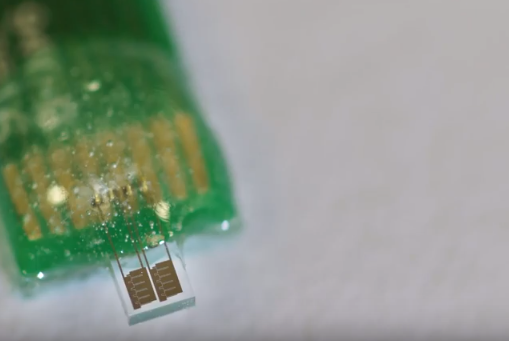Affordable Lead Sensor for Home and City Water Lines
Published on by Water Network Research, Official research team of The Water Network in Technology
Citizens could become water quality watchdogs and monitor lead contamination at their own taps with new electronic sensors.
A new electronic lead sensor, potentially costing around $20, could keep an eye on home and city water quality, alerting residents and officials to the presence of lead within nine days. The University of Michigan researchers are seeking partners to bring the technology to market.

Image source: Youtube Printscreen
Mark Burns, the T.C. Chang Professor of Chemical Engineering at U-M, and his colleagues set out to develop an inexpensive sensor that could be placed at key points in city water systems as well as at the taps of homeowners.
“I hope it will have some impact because it is scary to think about having lead in your water,” said Burns.
The trick is separating lead from all the other metals that might be present in water, most of them only hazardous in very high doses.
“Since iron is the most common metal in water and is basically harmless (besides having a bad odor), we see it as interfering with our sensor,” said Wen-Chi Lin, a recent PhD graduate in chemical engineering.
So, she designed a sensor that could differentiate between lead and other metals like iron. It relies on two pairs of electrodes. The positive electrode and its neutral neighbor set up an electron-poor environment, while the negative electrode and its neutral neighbor create an electron-rich environment.
The negative electrode offers electrons to positive ions, capturing most metals. The metals are already oxidized in water, meaning they’ve given up some of their electrons, so they prefer an opportunity to get electrons back.
However, lead is attracted to the positive side of the electrode set – it is the only contaminant metal that readily oxidizes further.
Lin tested the sensors in a variety of environments: simulated tap water and water from an actual tap, spiked with metals or not. As lead builds up on the positive electrode, it eventually reaches the neutral electrode, closing the circuit and generating a voltage. Above a one-volt signal, the system registers a hit.
Read full article: The Michigan Engineer
Attached link
http://www.youtube.com/embed/iTaJrfHiglUMedia
Taxonomy
- Decontamination
- Sensor Systems
- Integrated Urban Water Management
- Urban Water
- Consumption
- Urban Water Infrastructure
- Sensors
- Contaminant Control
- Lead Reduction